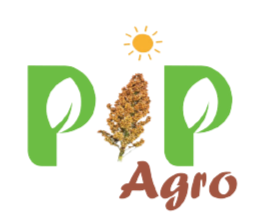🌾 What Are Millets? History & Science Why They're Gaining Popularity Again
Santosh BobadeShare
🌱 Introduction: Millets – The Ancient Grains Making a Modern Comeback
In recent years, millets have re-emerged as a popular superfood across the globe. Once considered "poor man's food," these ancient grains are now hailed for their nutritional richness, climate resilience, and health benefits.
But what exactly are millets, where did they come from, and why are they making headlines today? Let’s find out.
🌾 What Are Millets?
Millets are a group of small-seeded cereal grains that belong to the Poaceae grass family. They have been cultivated for over 5,000 years, especially in India, Africa, and China.
✅ Common Types of Millets:
- Foxtail Millet (Kangni)
- Finger Millet (Ragi/Nachni)
- Pearl Millet (Bajra)
- Little Millet (Kutki)
- Barnyard Millet (Sanwa)
- Kodo Millet
- Sorghum (Jowar)
- Proso Millet
🏛️ A Brief History of Millets in India
Millets were a staple in Indian diets even before rice and wheat became mainstream.
- Indus Valley Civilization (2500 BCE): Archaeological evidence shows millet cultivation in Harappa.
- Vedic Texts: Millets are mentioned in Yajurveda as "Annam" (food grain).
- Traditional Indian Cultures: Millets were regularly used in tribal, rural, and even royal kitchens for porridge, flatbreads, and drinks.
However, during the Green Revolution (1960s), millets took a backseat due to the promotion of high-yielding varieties of wheat and rice.
📈 Why Are Millets Becoming Popular Again?
1️⃣ Nutritional Superiority
According to the Indian Institute of Millet Research, millets are rich in:
- Dietary fiber
- Micronutrients like iron, calcium, zinc
- Essential amino acids
- Low glycemic index (suitable for diabetics)
| Millet Type | Protein (g) | Fiber (g) | Iron (mg) | Calcium (mg) |
|---|---|---|---|---|
| Ragi | 7.3 | 3.6 | 3.9 | 344 |
| Bajra | 14.6 | 1.2 | 8.0 | 42 |
| Jowar | 10.4 | 1.6 | 4.1 | 25 |
Source: National Institute of Nutrition, ICMR
2️⃣ Eco-Friendly & Sustainable
- Millets require 70% less water than rice.
- Can grow in drought-prone and semi-arid areas.
- Need minimal fertilizers or pesticides.
Hence, millets are being promoted by the Indian Government as “Smart Food” for both people and the planet.
3️⃣ Health Consciousness
With increasing lifestyle diseases like obesity, diabetes, and heart problems, people are shifting toward whole grains and gluten-free options. Millets offer:
- Improved digestion
- Weight loss support
- Blood sugar regulation
- Hormonal balance
4️⃣ Government Initiatives
India celebrated 2023 as the International Year of Millets, endorsed by the UNFAO, to promote millet farming and consumption.
Schemes like:
- POSHAN Abhiyaan
- Mid-day meal millet inclusion
- Support to millet startups
...have accelerated the millet revolution.
🧠 Scientific Studies Backing Millet Benefits
- American Journal of Clinical Nutrition (2008): Consumption of finger millet reduces plasma glucose in type-2 diabetics.
- Journal of Food Science and Technology (2015): Millets have natural antioxidants that prevent oxidative stress and inflammation.
🧘♀️ Ayurvedic Perspective on Millets
In Ayurveda, millets are:
- Light to digest (laghu)
- Dry in nature (ruksha) – good for Kapha balancing
- Beneficial when soaked or cooked with ghee
Ragi is used for cooling and strengthening bones. Kodo millet helps detoxify the liver.
🥣 How to Include Millets in Your Diet
- Millet roti or bhakri
- Millet dosa/idli
- Millet upma or porridge
- Millet khichdi
- Baked goods like millet cookies, bread
Pro Tip: Soak millets for 6–8 hours before cooking to improve digestibility.
🌍 Final Thoughts: Back to Our Roots
Millets are not a new trend—they are a revival of our ancient food wisdom. Whether you are health-conscious, eco-conscious, or both, millets are a nutrient-dense, versatile, and sustainable grain choice.



